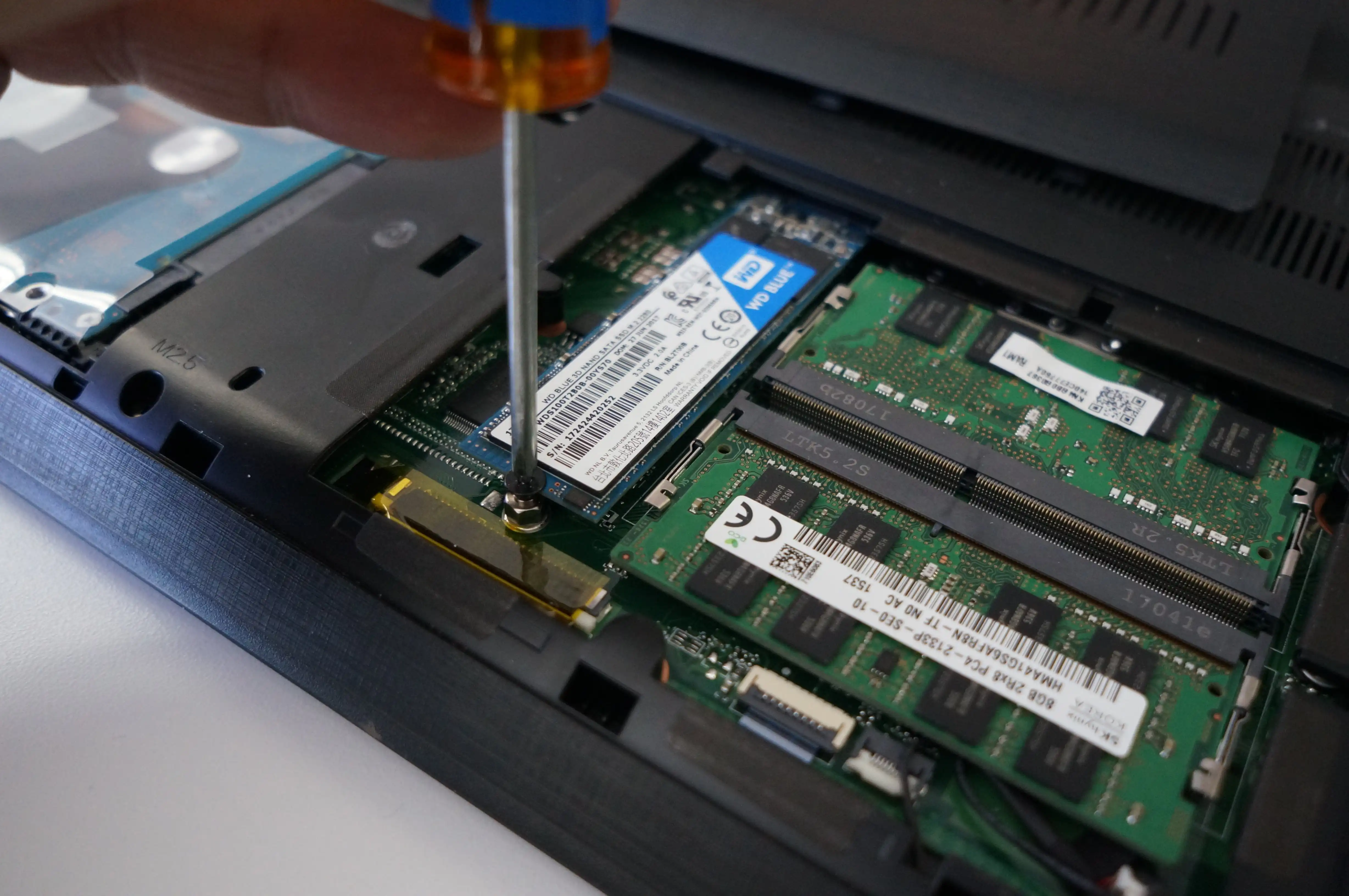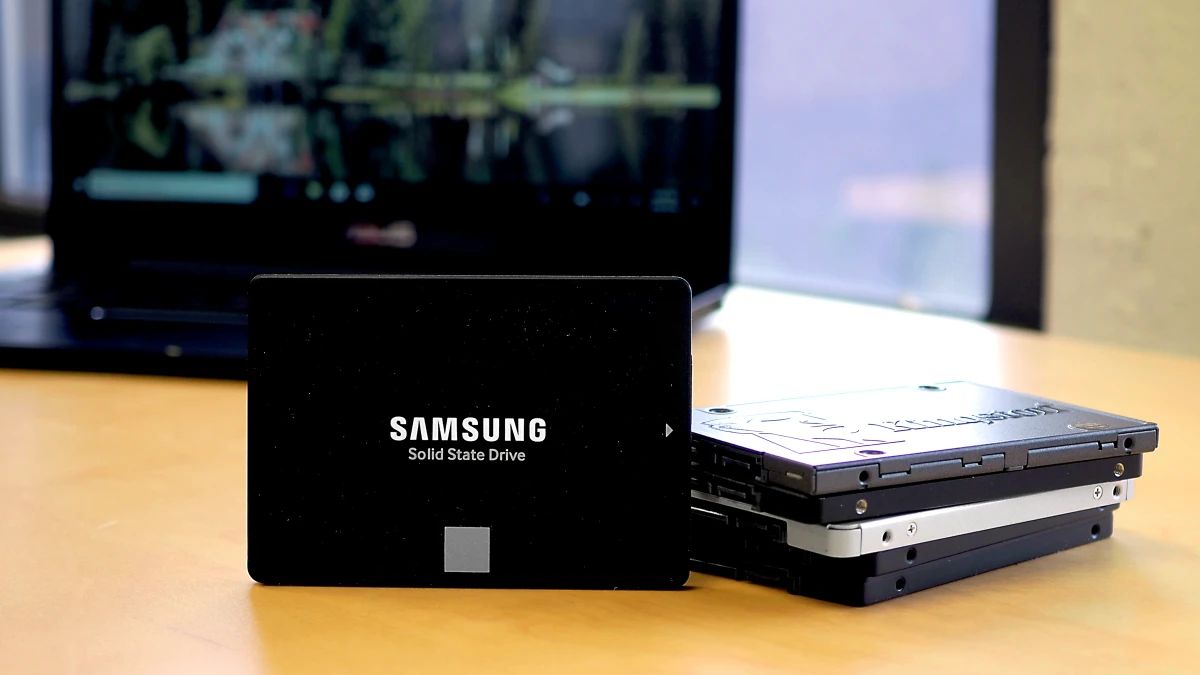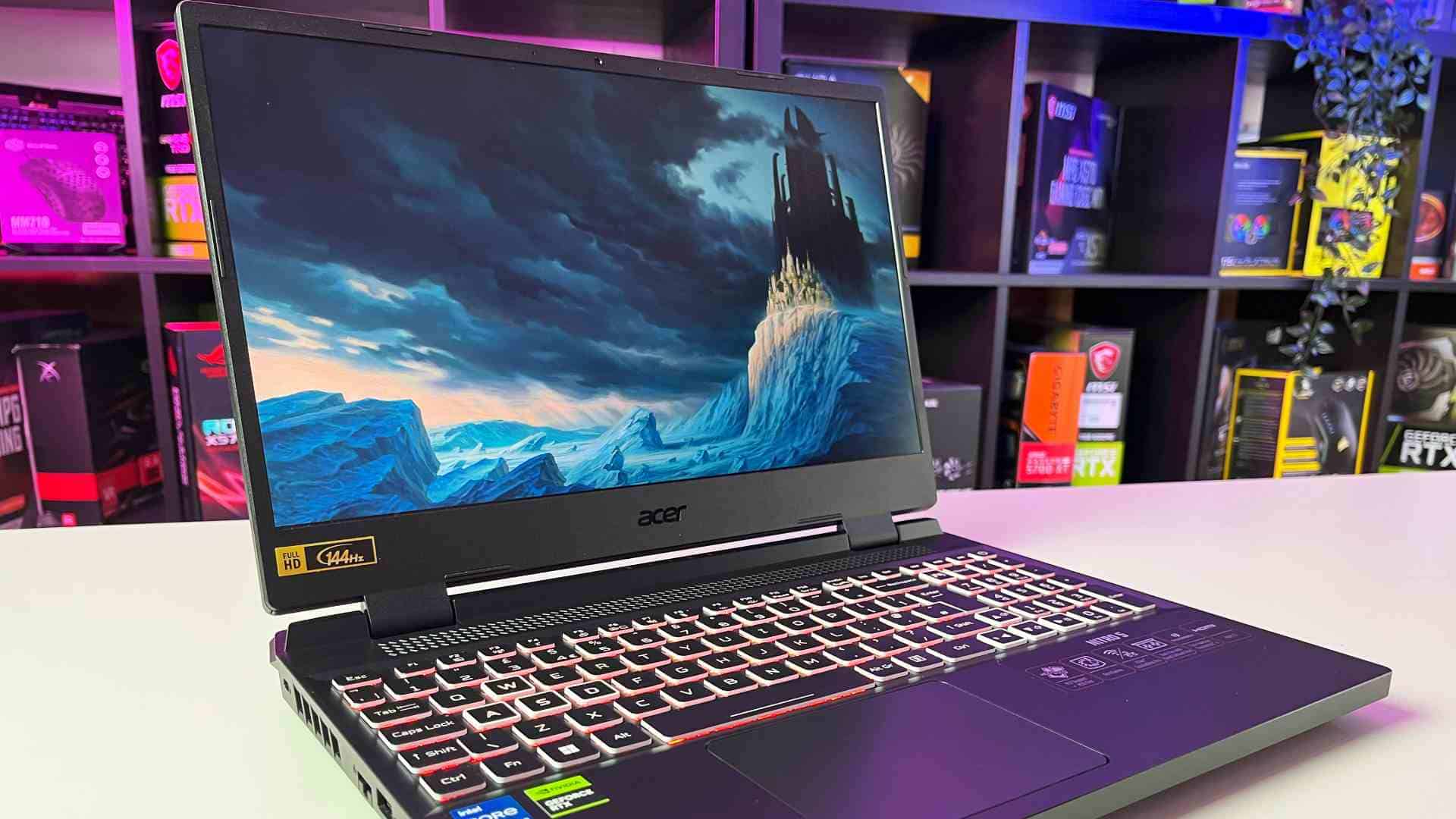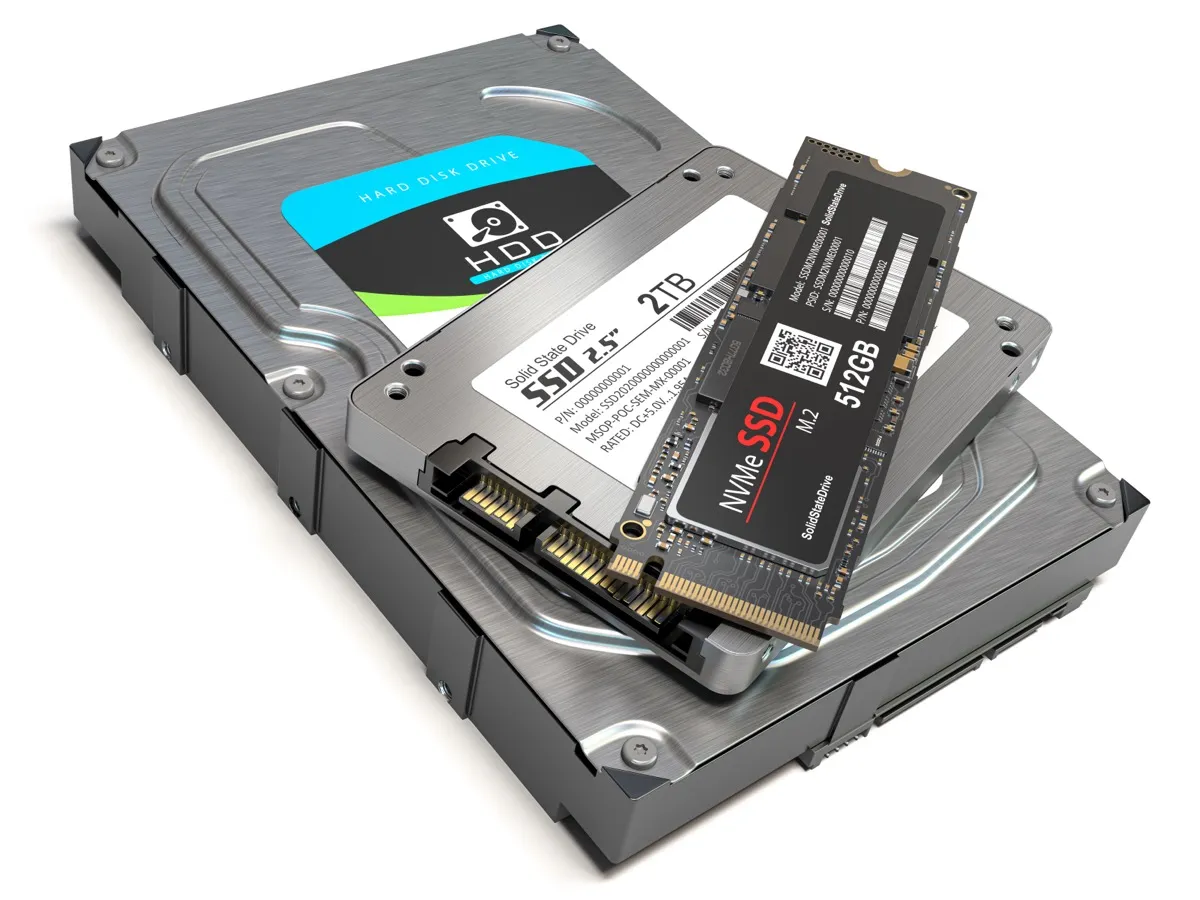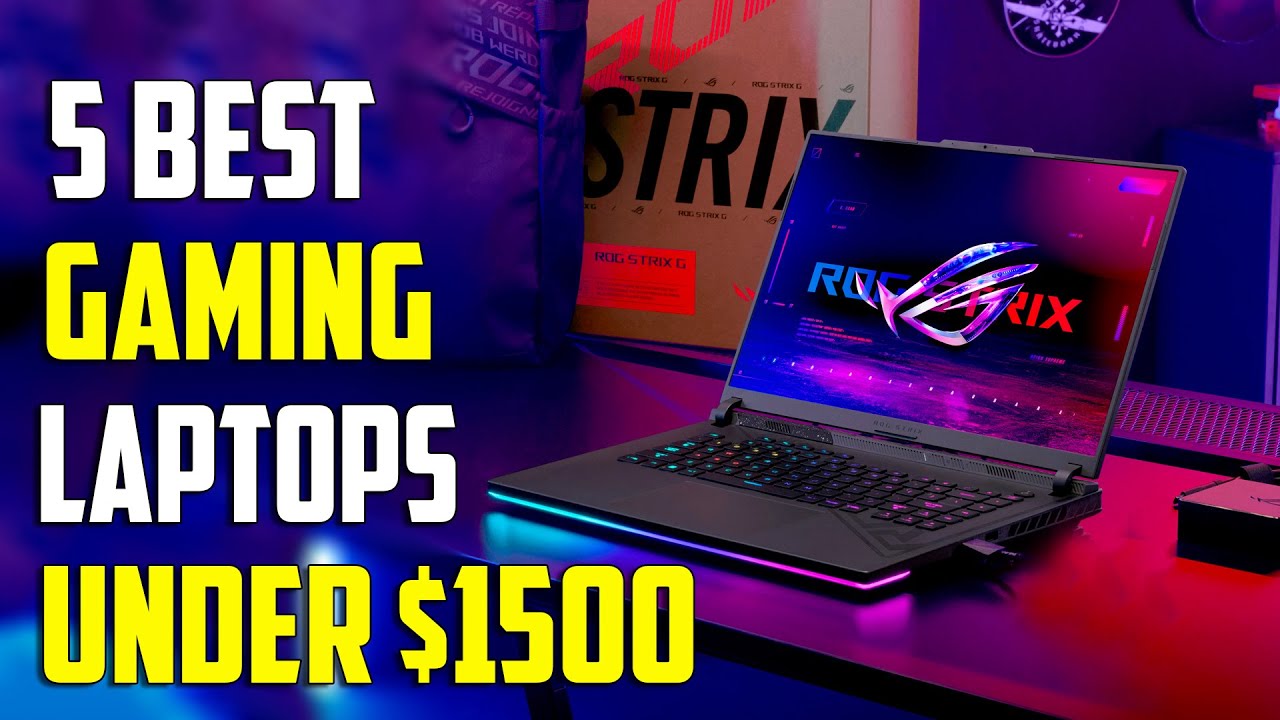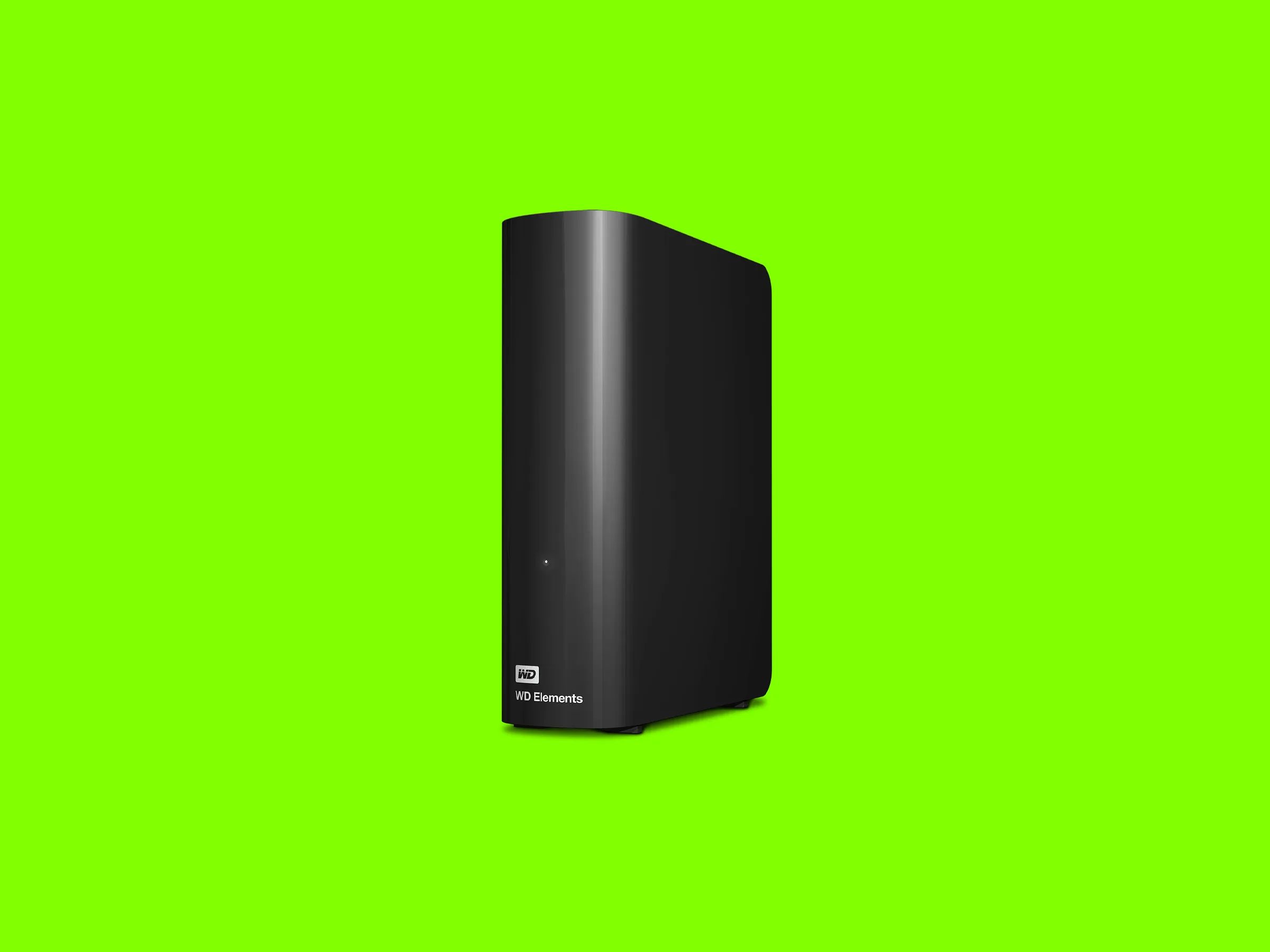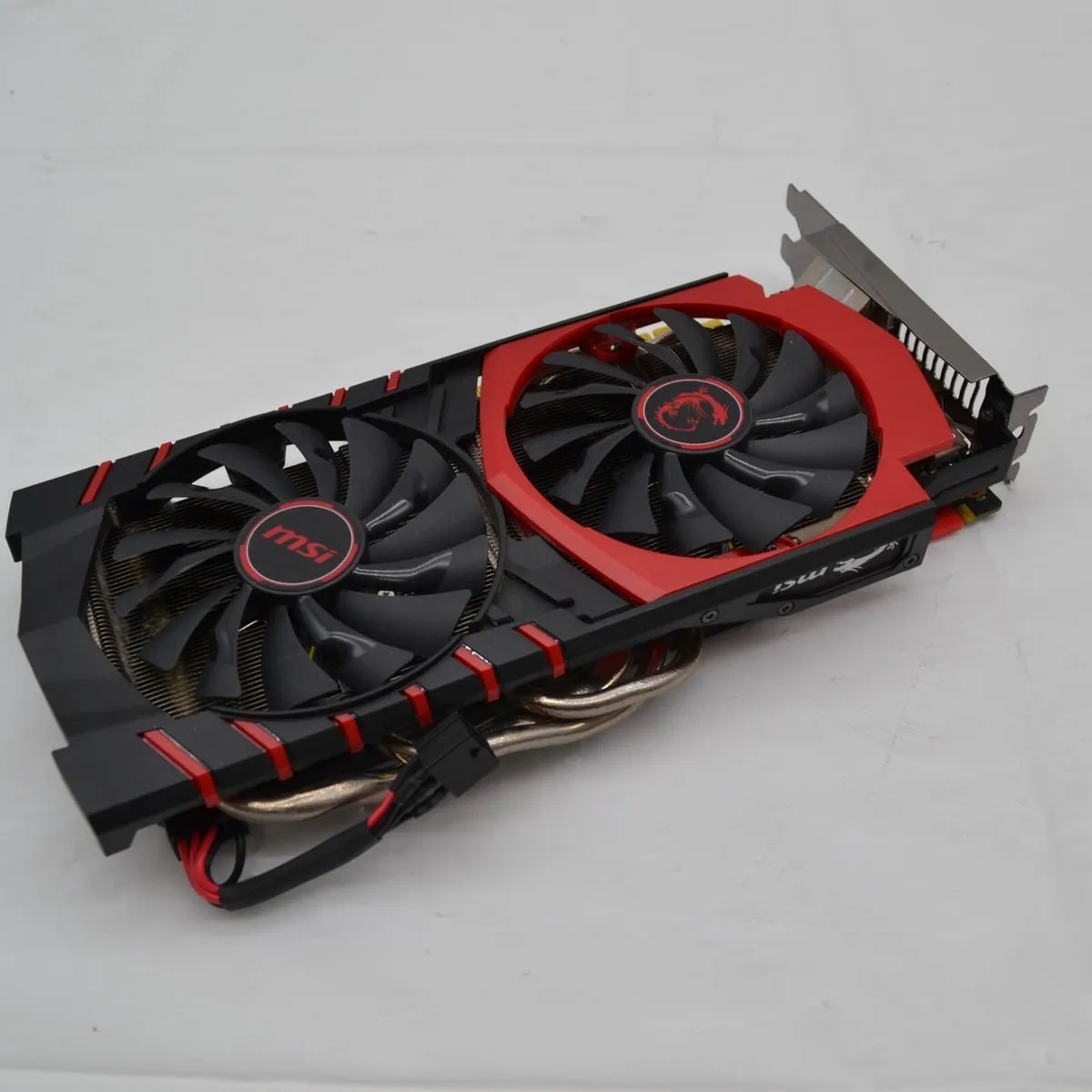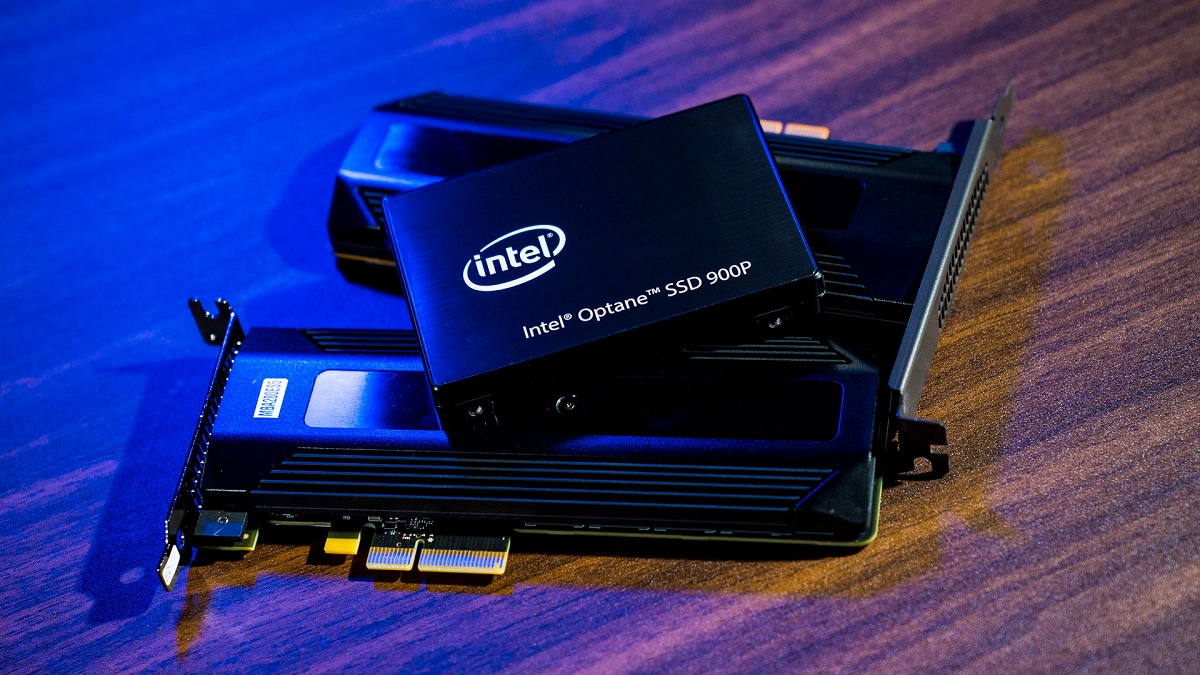Introduction
Welcome to the world of solid-state drives (SSDs)! If you’re looking to upgrade your laptop’s storage and boost its performance, an SSD can be a game-changer. Unlike traditional hard drives, SSDs use flash memory technology, resulting in faster data access, improved boot times, and reduced power consumption. However, before you rush out to purchase an SSD, it’s essential to understand the various types and form factors available, ensuring compatibility with your laptop.
In this article, we will explore the different SSD connections and form factors, helping you determine which type of SSD will fit your laptop. We’ll delve into the details of each form factor, highlighting their benefits and limitations. By the end of this article, you’ll have a clear understanding of the options available and be better equipped to make an informed decision.
Understanding SSD Connections
SSDs connect to your laptop’s motherboard using specific interfaces. The most common connections are SATA (Serial ATA) and PCIe (Peripheral Component Interconnect Express). SATA is the standard interface found in most laptops, while PCIe offers higher speeds and is typically found in high-end, gaming, or professional laptops.
Now that we have a basic understanding of SSD connections let’s explore the different SSD form factors in more detail.
Understanding SSD Connections
Before we delve into the various SSD form factors, it’s essential to understand the different connections that SSDs use. The two primary connections you’ll come across are SATA (Serial ATA) and PCIe (Peripheral Component Interconnect Express).
SATA is the most common interface found in laptops and desktop computers. It offers good performance and compatibility with older systems. SATA SSDs typically use a 2.5-inch form factor, making them easy to install in most laptops. These drives provide significant speed improvements compared to traditional hard drives, but they are not as fast as the newer PCIe-based SSDs.
On the other hand, PCIe is a newer and faster interface typically found in high-end laptops and desktops, especially those used for gaming or professional applications. PCIe SSDs use the faster NVMe (Non-Volatile Memory Express) protocol and offer blisteringly fast read and write speeds. They come in different form factors, which we will discuss later in this article.
While PCIe SSDs are generally faster than SATA SSDs, it’s important to note that the real-world benefits can vary depending on your usage scenario. For everyday tasks like web browsing, document editing, and media playback, a SATA SSD will provide ample performance. However, if you frequently work with large files, do video editing, or gaming, a PCIe SSD will deliver a noticeable speed boost.
It’s also worth mentioning that some laptops may only support one type of SSD connection. Therefore, it’s crucial to check your laptop’s specifications or consult the manufacturer to ensure compatibility.
Now that we have a good understanding of the various SSD connections, let’s explore the different form factors available for SSDs.
Common SSD Form Factors
SSDs come in various form factors, which dictate their physical size and shape. The most common form factors you’ll encounter when looking for an SSD for your laptop are 2.5-inch SATA, M.2 SATA, M.2 NVMe, and PCIe.
2.5-inch SATA SSDs:
The 2.5-inch SATA SSD is the traditional form factor that resembles a small rectangle. It’s the most widely adopted form factor and is compatible with most laptops and desktops. These drives are easy to install, as they fit into the same slots used by traditional hard drives. While 2.5-inch SATA SSDs offer a significant performance boost over HDDs, their speeds are limited compared to other SSD form factors.
M.2 SATA SSDs:
M.2 SATA SSDs are smaller and more compact than the 2.5-inch SATA drives. They use the M.2 interface and are typically found in thinner laptops and ultrabooks. M.2 SATA SSDs provide faster speeds compared to their 2.5-inch counterparts, making them an excellent choice for users seeking a balance between performance and space efficiency.
M.2 NVMe SSDs:
M.2 NVMe SSDs take advantage of the PCIe interface and the NVMe protocol to deliver lightning-fast speeds. These drives are the latest and most advanced form factor currently available. M.2 NVMe SSDs are significantly faster than both 2.5-inch SATA and M.2 SATA SSDs, making them ideal for demanding tasks like gaming, content creation, and professional applications.
PCIe SSDs:
PCIe SSDs are high-performance drives that connect directly to the PCIe slot on the motherboard. They offer the fastest speeds and are commonly used in high-end gaming laptops and workstations. While PCIe SSDs provide unparalleled performance, they are generally more expensive compared to other form factors.
When choosing an SSD for your laptop, it’s crucial to consider the form factor that is compatible with your laptop’s motherboard and the level of performance you require. Some laptops may only have support for one or a few specific form factors, so it’s important to check your laptop’s specifications or consult the manufacturer’s documentation.
Now that we have explored the common SSD form factors, you are better equipped to make an informed decision about which type of SSD will fit your laptop’s requirements.
5-inch SATA SSDs
The 2.5-inch SATA SSD form factor is one of the most commonly used and widely available options on the market. As the name suggests, these drives have a physical size of 2.5 inches, making them compatible with the majority of laptops and desktop computers.
One of the main advantages of 2.5-inch SATA SSDs is their ease of installation. These drives can be easily installed into the same slots used by traditional hard drives in laptops or desktops. The standardized form factor ensures compatibility and hassle-free upgradeability for users. It’s important to note that some laptops may require an additional bracket or adapter to properly fit the 2.5-inch SATA SSD, so it’s always a good idea to check the laptop’s specifications or consult the manufacturer for guidance.
In terms of performance, 2.5-inch SATA SSDs offer a significant improvement over traditional hard drives. They provide faster data access and transfer speeds, resulting in faster boot times, reduced application loading times, and overall improved system responsiveness. However, compared to newer form factors like M.2 NVMe and PCIe SSDs, 2.5-inch SATA SSDs have a lower maximum speed due to the limitations of the SATA interface.
2.5-inch SATA SSDs are available in various storage capacities, ranging from 120GB to 4TB or even higher. This allows users to choose a capacity that suits their needs, whether it’s for basic tasks like web browsing and document editing, or more demanding tasks like photo editing or video rendering. It’s important to consider your storage requirements and budget when selecting the capacity of a 2.5-inch SATA SSD.
Overall, 2.5-inch SATA SSDs provide a good balance of performance, compatibility, and affordability. They are a reliable choice for users looking to upgrade their laptops or desktops without investing in newer systems or specialized adapters. However, if you require even faster speeds or have a laptop that supports newer form factors like M.2 NVMe or PCIe, you may want to explore those options for a more significant performance boost.
In the next sections, we will explore other SSD form factors, including M.2 SATA, M.2 NVMe, and PCIe, providing a comprehensive overview to help you choose the right SSD for your laptop.
M.2 SATA SSDs
M.2 SATA SSDs are a popular choice for those seeking a balance between performance and space efficiency. This form factor utilizes the M.2 interface and is commonly found in thinner laptops, ultrabooks, and compact desktop systems.
One of the key advantages of M.2 SATA SSDs is their smaller physical size. They feature a slim and compact design, making them perfect for devices with limited space, such as slim laptops. The M.2 interface connects directly to the motherboard, eliminating the need for additional cables and reducing clutter inside the system.
M.2 SATA SSDs offer improved performance compared to their 2.5-inch SATA counterparts. Due to the use of the M.2 interface, these drives can take full advantage of the SATA III (6 Gbps) speed, resulting in faster data transfer rates. While the speeds may not match those of newer form factors like M.2 NVMe or PCIe, M.2 SATA SSDs provide a noticeable performance boost over traditional hard drives and can significantly improve system responsiveness.
When considering an M.2 SATA SSD, it’s important to ensure compatibility with your laptop or desktop. M.2 slots come in different key types, including B-key, M-key, and B+M key. The key type determines the type of connections that can be made with the drive. It’s crucial to check your device’s specifications or consult the manufacturer to determine the compatible key type for your system.
M.2 SATA SSDs are available in a range of storage capacities, similar to 2.5-inch SATA SSDs. Depending on your needs, you can choose from capacities as low as 128GB or go as high as 4TB or even higher. Additionally, M.2 SATA SSDs offer reliable performance and durability, making them suitable for both casual users and professionals alike.
It’s important to note that M.2 SATA SSDs do not offer the same level of performance as M.2 NVMe or PCIe drives due to the limitations of the SATA III interface. Therefore, if you require the fastest speeds and have a laptop or desktop that supports M.2 NVMe or PCIe, it may be worth considering those options for even better performance.
In the next section, we will explore the M.2 NVMe SSDs, which offer even faster speeds and are the latest advancement in SSD technology.
M.2 NVMe SSDs
M.2 NVMe (Non-Volatile Memory Express) SSDs represent the cutting-edge of SSD technology. These drives offer lightning-fast speeds and are ideal for users who require the highest level of performance from their storage devices.
One of the key advantages of M.2 NVMe SSDs is their incredible speed. Unlike M.2 SATA SSDs that use the SATA III interface, M.2 NVMe SSDs use the PCIe (Peripheral Component Interconnect Express) interface. This allows them to take full advantage of the PCIe lanes, resulting in significantly faster data transfer rates. With read and write speeds that can reach several times faster than that of SATA-based SSDs, M.2 NVMe drives greatly enhance system responsiveness, loading times, and overall performance.
Another advantage of M.2 NVMe SSDs is their compact form factor. Like the M.2 SATA SSDs, they utilize the M.2 interface, which eliminates the need for cables and reduces clutter in your system. The smaller physical size makes them perfect for thin and lightweight laptops, as well as compact desktop systems.
When considering an M.2 NVMe SSD, it’s crucial to check whether your laptop or desktop supports the NVMe protocol and has an available M.2 slot that supports PCIe x4 or higher. These drives are not backward compatible with SATA-only M.2 slots, so compatibility verification is essential. Additionally, some M.2 NVMe drives can generate a significant amount of heat, so it’s recommended to check if your device has proper thermal management solutions.
M.2 NVMe SSDs are available in various storage capacities, ranging from 256GB to 2TB or even higher. This allows users to choose the capacity that suits their needs, whether it’s for gaming, content creation, or data-intensive tasks. Additionally, M.2 NVMe SSDs often come with advanced features like hardware encryption and power loss protection, ensuring data security and reliability.
Although M.2 NVMe SSDs offer exceptional performance, it’s important to consider your specific needs and usage requirements. If you primarily use your laptop for everyday tasks like web browsing, document editing, and media consumption, a standard SATA or M.2 SATA SSD might provide sufficient performance. However, if you frequently work with large files, do video editing, or gaming, an M.2 NVMe SSD will deliver a significant boost in speed and productivity.
In the next section, we will explore PCIe SSDs, which offer even higher speeds and are commonly found in high-end gaming laptops and workstations.
PCIe SSDs
PCIe (Peripheral Component Interconnect Express) SSDs are the epitome of high-performance storage solutions. Designed for demanding applications and power users, PCIe SSDs offer blazing-fast speeds that surpass the capabilities of SATA and even M.2 NVMe SSDs.
One of the primary advantages of PCIe SSDs is their unparalleled speed. These drives connect directly to the PCIe slot on the motherboard, leveraging the high-bandwidth PCIe lanes for data transfer. This results in astonishingly fast read and write speeds, significantly reducing loading times and greatly enhancing overall system performance. PCIe SSDs are often used in high-end gaming laptops, workstations, and servers where speed is of utmost importance.
PCIe SSDs come in various form factors, including add-in cards and M.2 drives with PCIe interfaces. Add-in cards are larger and typically found in desktop systems, while M.2 PCIe SSDs are more compact and commonly used in laptops and smaller form factor devices that have M.2 slots with PCIe support.
These drives offer extremely high capacities, making them suitable for users with demanding storage needs. PCIe SSDs are available in capacities ranging from 256GB to multiple terabytes, allowing you to store vast libraries of media, large projects, and data-intensive applications without compromise.
It’s crucial to ensure compatibility when considering a PCIe SSD for your laptop. Not all laptops support PCIe SSDs, and even among those that do, the available slots and supported PCIe versions may vary. Checking your laptop’s specifications or consulting the manufacturer will help you determine if your laptop supports PCIe SSDs and what kind of PCIe interface it can accommodate.
Due to their high-performance nature, PCIe SSDs may generate significant heat. It’s important to consider if your laptop has adequate thermal management solutions, especially if you plan on using the drive for extended periods or under heavy workloads.
One important factor to consider when contemplating a PCIe SSD is price. PCIe SSDs tend to be more expensive than other SSD form factors due to their superior performance. However, if speed is a top priority and you require the absolute best in storage performance, investing in a PCIe SSD may be well worth the cost.
With their lightning-fast speeds, high capacities, and uncompromising performance, PCIe SSDs are the go-to choice for power users, gamers, and professionals seeking the ultimate storage solution for their laptops.
In the next section, we will discuss considerations to help you choose the right SSD form factor for your laptop.
Choosing the Right SSD for Your Laptop
Now that we have explored the different SSD connections and form factors, it’s time to choose the right SSD for your laptop. Consider the following factors to make an informed decision:
1. Compatibility: Ensure that your laptop supports the form factor and connection type of the SSD you’re considering. Check your laptop’s specifications or consult the manufacturer for compatibility information.
2. Performance needs: Determine your performance requirements based on your usage. If you perform demanding tasks like gaming, video editing, or professional work, consider faster SSDs like M.2 NVMe or PCIe. For average daily tasks, a SATA or M.2 SATA SSD will provide a significant improvement over traditional hard drives.
3. Storage capacity: Assess your storage needs and select an SSD with an appropriate capacity. Consider both current and future requirements, keeping in mind that SSDs typically come in a range of capacities. It’s better to have slightly more storage space than you immediately need to accommodate future growth.
4. Budget: Set your budget and consider the cost of different SSD options. Keep in mind that faster and higher-capacity SSDs often come with a higher price tag. Balance your performance needs with your budget to find the best fit.
5. Additional features: Some SSDs offer additional features like hardware encryption, power loss protection, and advanced error correction. If data security and reliability are important to you, consider SSDs with these extra features.
By considering these factors, you’ll be able to select the right SSD that meets your laptop’s needs and budget. Whether you opt for a 2.5-inch SATA SSD for compatibility, an M.2 NVMe SSD for blazing-fast speeds, or a PCIe SSD for ultimate performance, upgrading to an SSD will undoubtedly breathe new life into your laptop.
Remember to properly back up your data before performing any hardware changes, and follow the manufacturer’s instructions for installation. With the right SSD in place, you’ll experience improved system responsiveness, faster data access, and a smoother overall computing experience.
Now that you have the necessary knowledge to choose the right SSD, it’s time to upgrade your laptop and enjoy the benefits of enhanced storage performance!
Conclusion
Upgrading your laptop with an SSD can transform its performance and enhance your overall computing experience. Understanding the various SSD connections and form factors is crucial in choosing the right SSD for your laptop.
We explored the common SSD form factors, including 2.5-inch SATA, M.2 SATA, M.2 NVMe, and PCIe. Each form factor has its own advantages and considerations. The 2.5-inch SATA SSDs offer compatibility and ease of installation, while M.2 SATA SSDs provide a balance between performance and space efficiency. M.2 NVMe SSDs deliver lightning-fast speeds, and PCIe SSDs offer unmatched performance for power users and gamers.
When choosing an SSD, it’s important to consider compatibility, your performance needs, storage capacity, budget, and any additional features you may require. By considering these factors, you can make an informed decision and select an SSD that suits your laptop’s requirements.
Whether you choose a SATA SSD for general tasks, an NVMe SSD for intensive workloads, or a PCIe SSD for top-tier performance, upgrading to an SSD will yield significant benefits. You’ll enjoy faster boot times, reduced application loading times, and improved overall system responsiveness.
Before upgrading, don’t forget to back up your data and carefully follow the manufacturer’s instructions for installation. It’s also worth noting that SSD prices have become increasingly affordable in recent years, making it a great time to make the switch.
So, take the leap and upgrade your laptop with an SSD. Experience the power of faster storage and reap the rewards of increased productivity and efficiency. Your laptop will thank you for it!







